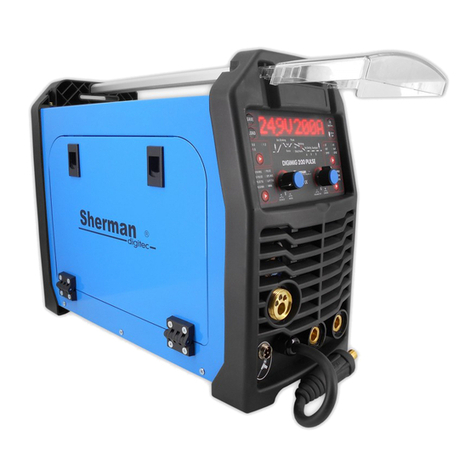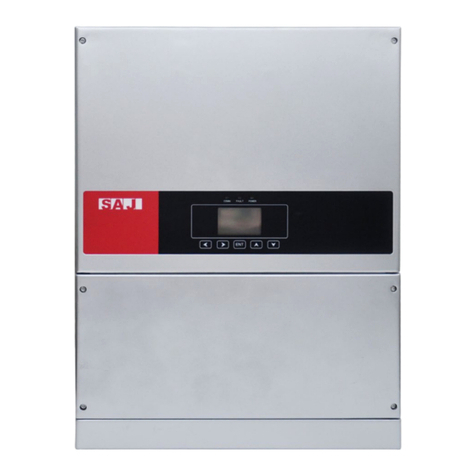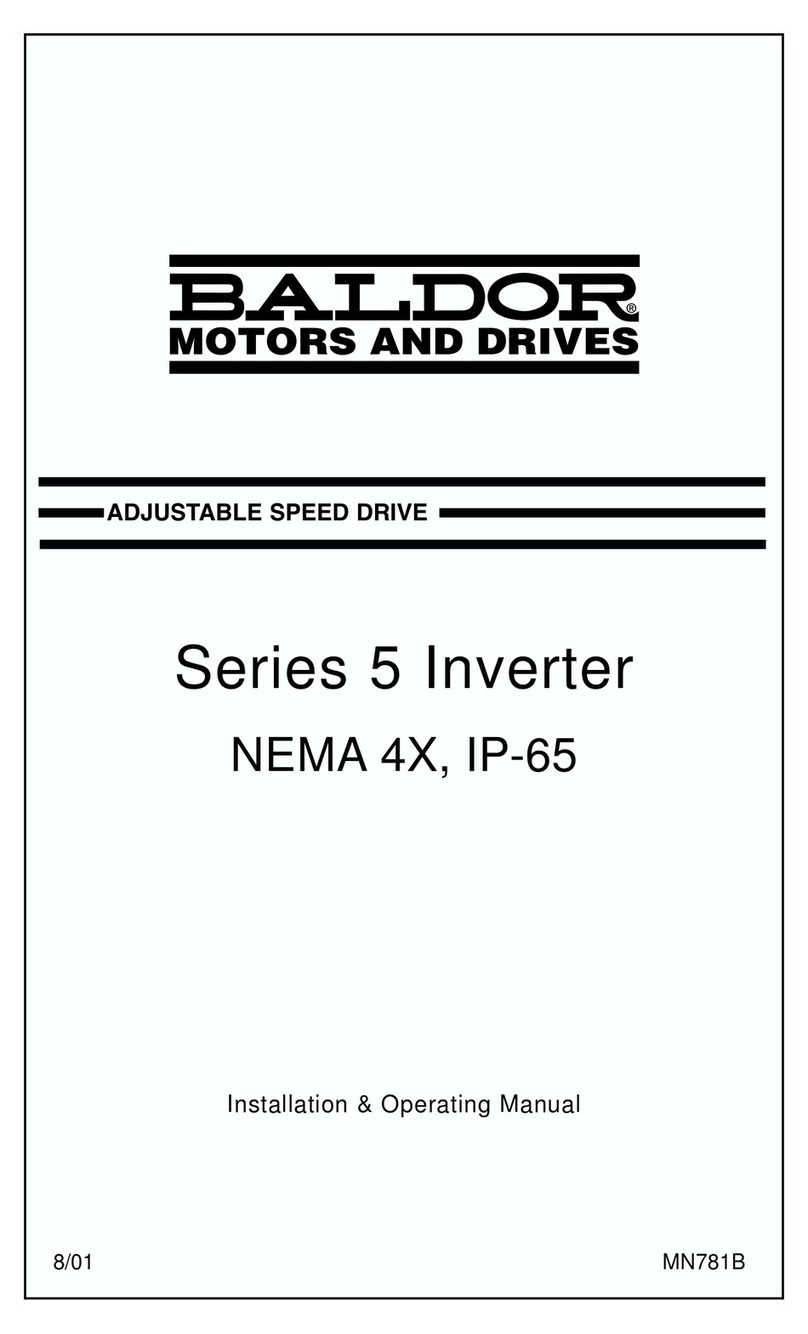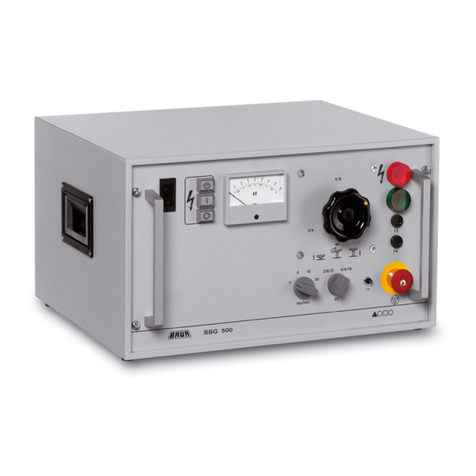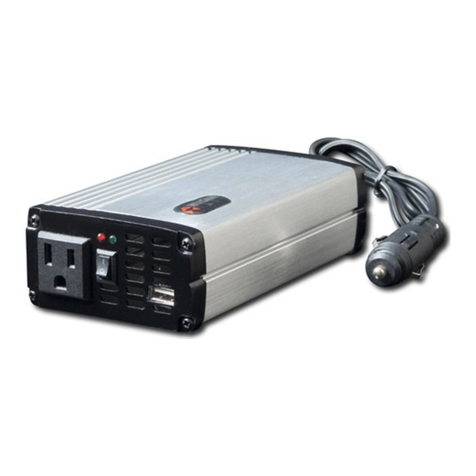Geotech Solar Sipper User manual

Rev 10/12/2017 Part # 16550176
Geotech Sipper
Installation and Operation Manual

i

i
Table of Contents
Section 1: System Description................................................................................................................................4
Function and Theory ..............................................................................................................................................4
Sipper Operation ....................................................................................................................................................4
Recovery Rates......................................................................................................................................................5
Section 2: System Installation.................................................................................................................................6
Installation of the Solar Sipper ...............................................................................................................................6
Solar Panel Location..............................................................................................................................................6
Mounting the Control Panel....................................................................................................................................8
Solar Sipper Wiring ................................................................................................................................................9
Adding Additional Panels .................................................................................................................................... 10
AC Sipper Wiring................................................................................................................................................. 10
Grounding............................................................................................................................................................ 11
Connect All Tubing Runs..................................................................................................................................... 11
Deploy the Stainless Steel Pump and Skimmer ................................................................................................. 11
Product Recovery Tank....................................................................................................................................... 12
Section 3: Timer/Cycle Settings and Display Descriptions .............................................................................. 14
Setup Displays .................................................................................................................................................... 14
Start (Runtime) Displays ..................................................................................................................................... 15
Stopping Sipper Operation (Runtime)................................................................................................................. 16
System Status and Diagnostic Displays.............................................................................................................. 17
Alarm (Condition) and Fault Displays.................................................................................................................. 19
PCB Damage ...................................................................................................................................................... 19
Section 4: System Operation................................................................................................................................ 22
Establishing the Product Recovery Cycle Time.................................................................................................. 22
Initiating the Sipper Runtime............................................................................................................................... 23
Fluid Viscosity ..................................................................................................................................................... 24
Recovery Tank is Full.......................................................................................................................................... 24
Section 5: System Maintenance........................................................................................................................... 25
Sipper Controller ................................................................................................................................................. 25
Weekly Maintenance....................................................................................................................................... 25
Monthly Maintenance...................................................................................................................................... 25
Quarterly Maintenance.................................................................................................................................... 25
Yearly Maintenance ........................................................................................................................................ 26
Stainless Steel Pump and Skimmer.................................................................................................................... 26
Solar Panel.......................................................................................................................................................... 26
Solenoid Maintenance (Stuck Solenoid)............................................................................................................. 27
Section 6: System Troubleshooting .................................................................................................................... 30
Section 7: System Specifications ........................................................................................................................ 33
Section 8: System Schematics............................................................................................................................. 35
Section 9: Parts and Accessories........................................................................................................................ 39
Sipper Pump and Skimmer Parts and Accessories ............................................................................................ 40
Installation Guide: Desiccant Dryer Kit for Geotech Sipper (Solar or AC).......................................................... 41
The Warranty.......................................................................................................................................................... 44

1
NOTE
DOCUMENTATION CONVENTIONS
This manual uses the following conventions to present information:
An exclamation point icon indicates a WARNING of a situation or condition
that could lead to personal injury or death. You should not proceed until you
read and thoroughly understand the WARNING message.
A raised hand icon indicates CAUTION information that relates to a situation or
condition that could lead to equipment malfunction or damage. You should not
proceed until you read and thoroughly understand the CAUTION message.
A note icon indicates NOTE information. Notes provide additional or
supplementary information about an activity or concept.
WARNING
CAUTION

2
In order to ensure your Solar Sipper has a long service life and operates
properly, adhere to the following cautions and read this manual before use.
Controller power input source must not exceed specified ratings.
Controller may not operate properly with wiring not supplied by
manufacturer.
Avoid spraying fluid directly at controller.
Never submerge controller.
Avoid pulling on wires to unplug controller wiring.
Avoid using a controller with obvious physical damage.
To prevent damage, DO NOT drop the controller.
WARNING
Do not operate this equipment if it has visible signs of significant physical
damage other than normal wear and tear.

3
The following applies only to users in European countries:
This product is designated for separate collection at an appropriate collection point. Do
not dispose of as household waste.
For more information, contact the seller or the local authorities in charge of waste
management.
Notice for consumers in Europe:
This symbol indicates that this product is to be collected separately.

4
Section 1: System Description
Function and Theory
The Geotech Solar Sipper (Sipper) is a unique solar powered hydrocarbon recovery system used for
operating an active down well remediation pump with an attached Skimmer. It is designed for
applications where electrical power is not available or not economically feasible. Electrical power used
to run the Solar Sipper is generated on-site by solar panels. The internal compressor is capable of
producing up to 20” (51 cm) Hg vacuum and 100 PSI (6.9 bar) pressure. This alternating
vacuum/pressure process allows the user to recover a wide range of fluids, from very viscous to ultra-
light Non-Aqueous Phase Liquid (NAPL), from depths as deep as 180’(4.6 m) below ground surface.
Optional multiple channel controllers can operate up to eight (8) pumps in separate recovery wells.
The standard Solar Sipper uses a 12VDC, 75-amp hour battery that is charged with an attached 85
Watt solar panel. Systems can be expanded to utilize several solar panels and larger capacity batteries.
Multiple channel controllers can be implemented in areas where there are multiple recovery wells within
close proximity of each other. Up to eight (8) separate wells can be operated per controller.
In general, Geotech recommends a maximum distance of 500’(152 m) (including the well depth)
between the Sipper controller and the pump. Longer runs can be accommodated but are not
recommended. Careful consideration must be given to additional power requirements as well as
protecting the tubing from damage. In certain situations, multiple controllers with separate solar panels
and batteries may be a better solution on sites of a relatively larger area. The optional AC Sipper is
designed for locations where line voltage is readily available.
Ease of Deployment
The Solar Sipper can reduce overall project costs and dramatically improve deployment as follows:
Reduces the time and cost for a power line to be run to a site.
Eliminates the need for electricians to do install work and permitting.
The simple and safe low voltage system can be installed without special training or licensing
and requires minimal experience.
No trenching or transformer equipment is required.
Relocating equipment to follow a plume or to adjust to new site characterization information is
fast and easy.
Sipper Operation
The Sipper controller has an integrated programmable cycle timer for controlling the internal
compressor vacuum, pressure, and the time between cycles. This allows the user to calibrate the
Sipper to run at its most efficient rate based on the down well product recharge rate, product viscosity,
and Skimmer depth.
In this manual, a stainless steel pump with Skimmer, or any other down well
assembly used with a Sipper system, will be referred to as a pump. A chart
containing a range of viscous products can be found in Section 4: System
Operation.

5
During the vacuum timer cycle, vacuum is applied to the air line tubing, stainless steel pump, and
intake; helping the product to flow through the oleophilic/hydrophobic mesh screen and into the pump
cavity. When the programmed vacuum time expires, the system initiates the pressure timer cycle.
During the pressure timer cycle, air is compressed into the air line tubing, evacuating the product from
the pump. Once the programmed pressure time has expired, the compressor shuts down and the
system initiates the programmed delay timer. Upon expiration of the delay timer, the process is
repeated.
On multiple channel Sippers the vacuum, pressure, and delay cycles are set individually per well. This
accommodates recharge and recovery rates unique to individual wells on the same site. A variety of
timer setups can be implemented to maximize recovery. For example: different wells can be pumped
more or less often than others to maximize recovery. The programming prioritizes the pumps so one
pump is operational at a time.
The Sipper controller has several feedback data recording mechanisms that can be used to gauge
effectiveness of the remediation system. Two cycle counter screens are available, one records the total
lifetime cycles of the controller, the other counter is resettable by the user for monitoring purposes.
These cycle counts can be compared with total recovered fluid to determine how much fluid is being
recovered per pump cycle. There is also a runtime clock which only increments when the battery is
charged and when the system is operating. This clock can be compared with actual recorded
deployment time to determine if more solar panels are required to keep the system running. More on
this can be found in Section 6: System Troubleshooting of this manual.
The Solar Sipper Controller is dependent upon the annual average solar resources, which can vary
from region to region. Geotech assists in determining how much potential recovery can be expected
depending on where the site is and how many solar panels will be required. More information about
solar panel location can be found in Section 2: System Installation.
Recovery Rates
The available solar energy and number of solar panels will determine how quickly available product can
potentially be recovered. Recovery will ultimately be limited by the recharge rate of the product layer in
the well. Repeatedly removing the entire product layer can reduce fluid conductivity to the well and in
turn reduce recovery rates overall.
When the product layer is completely depleted, air is invited into the well screen and surrounding sub
surface soil or strata. This air can act to block fluid conductivity as well as to promote bacteria growth
and breakdown of the product being recovered. This will eventually ‘clog’ the fluid path to the well and
so reduce the product layer recharge rate. Geotech recommends recovering smaller amounts of
product more frequently. This will promote continued fluid conductivity to the well.
In the event that the intake screen, discharge line or check valve should get blocked, remove the
Skimmer and clean the intake cartridge and connections as described within the System Maintenance
Section of the Geotech Pump and Skimmer Assembly Manual.
Geotech offers a variety of tools and training to provide you with information on properly maintaining
your Sipper system and on obtaining a recharge rate. Contact Geotech to discuss your specific
application in detail.

6
Section 2: System Installation
Solar Sipper systems can be modularized and delivered on pallets that can be quickly and easily
deployed. This simplifies deployment where existing concrete pads or other infrastructure, does not
already exist. Geotech also offers training on proper installation of your Sipper system at its Denver,
Colorado manufacturing headquarters.
Installation of the Solar Sipper
Since the solar array and battery have live voltage, exercise caution when handling either item. Special
attention is required to ensure that the correct polarity is observed when making connections to the
battery and solar panels. Even though the system runs on a safe low voltage, the battery is capable of
storing very large amounts of energy from a low impedance source. This can pose a fire and burn
hazard.
Special care must be taken to avoid shorting out (making contact between both positive and negative
terminals) the battery with any tool or bare grounding wire. Leave protective caps in place and only
terminate a wire when you have verified it is the correct polarity (positive or negative.) The system can
tolerate reverse polarity connections as long as the ON/OFF switch remains in the OFF position.
Solar Panel Location
The annual average solar resources will vary from region to region. Geotech assists in determining how
much recovery you can expect (depending on where the site is located in the world) and how many
solar panels will be required. The site latitude will determine seasonal differences in recovery rate. For
example, in the northern hemisphere recovery rates will decline over the winter months and increase
during the summer months.
Site-specific information must be considered. Large objects like tress or building structures can block
sunlight from the reaching the solar panels. To maximize sun exposure, solar panels can be mounted
Sipper installations are to be performed by qualified personnel. If you are not
familiar with electrical power equipment, contact a qualified technician to assist
you with your installation.
AC Sipper Controller - Ensure the main line is turned off at the breaker and
that the ON/OFF switch for the control panel is in the OFF position before
proceeding with ANY external or internal wiring.
The standard Geotech Sipper is designed for installation and operation in a non-
hazardous, non-classified location with intrinsically safe extension into a hazardous
classified location. Geotech does not determine classification of a location.
Classification of location is subject to local jurisdiction enforcement of NFPA
regulations. All installations should be performed in accordance with NEC.
FPN: NEC 2008 section 500.5 (A) classification of locations says:
Through the exercise of ingenuity in the layout of electrical installations for
hazardous (classified) locations, it is frequently possible to locate much of the
equipment in an unclassified location and, thus, to reduce the amount of special
equipment required. FPNs are informational only and are not enforceable as
requirements of the NEC.

7
on top of poles or other available structures. Other unpredictable factors, such as more or less cloud
cover, must be also be considered when planning solar power capacity requirements.
Pick a location with a maximum exposure to sunlight. Avoid shadows, especially during the middle of
the day. Orient the module so that the surface will receive the maximum sun exposure over the year for
your particular site. The general guideline for positioning is as follows:
Solar panels should face south in the northern hemisphere and north in the southern
hemisphere.
A solar panel's angle should be set to the equivalent of your location’s latitude; plus 15 degrees
during the winter or minus 15 degrees in the summer.
For example: Denver, Colorado’s latitude is around 39 degrees. In winter, the panel should be raised to
54 degrees (from 0°) for optimum sun. For permanent installations, setting the panel angle equal to
your latitude will suffice.
Figure 2-1: Side view of solar panel assembly

8
Mounting the Control Panel
The enclosure for the Solar Sipper allows the customer the option to place the control panel in a
convenient and accessible location. It is recommended the control panel enclosure be placed out of the
direct path of weather and sunlight. If power is to be wired to the enclosure, then all conduit runs are to
be rigid metal and grounded to an equipment conductor common for non-current carrying metal parts.
The enclosure needs to be elevated above the height of the wellheads to prevent kinks to the exhaust
line and all air lines to the pumps. When selecting a location for your GECM controller, consider the
placement of air lines to and from the unit to prevent kinks, damage, or the buildup of fluid in sagging
lines.
Figure 2-2 is an example of a Sipper control panel mounted to a back panel with 2” (5cm) U-bolts.
Using a back panel will support the enclosure while giving you the ability to pole mount the unit.
Figure 2-2: Example of Sipper enclosure mounted to back panel with additional U-bolts for pole
attachment.
NEVER drill mounting holes from, or through the inside of the enclosure when
attaching the controller to another surface. It is advised that you mount the
enclosure to a strong back panel, using the brackets supplied, before attaching
the unit to a pole or other surface.
Diagram is an example only. Mounting hardware shown is available through
Geotech. See Section 9: Parts and Accessories. Always avoid drilling through the
enclosure body.

9
Solar Sipper Wiring
Solar Sipper systems are supplied with 25’(7.6 m) of 4 conductors 14 AWG cable. DO NOT modify the
length of this power cable. After ensuring the power switch on the controller is set to OFF, make all
external power connections as shown in Figure 2-3.
Figure 2-3: Example of external wiring for a Solar Sipper system.
A brand new or replacement battery may not be fully charged. This will cause the
Solar Sipper to go into low voltage shutdown when initially powered up. Allowing the
battery to fully charge before deployment will accelerate initial startup. Otherwise, the
system could take several days to begin operating depending on the number of solar
panels used and the amount of sun exposure. If freeze conditions exist, insulate your
battery. A frozen battery will not charge until it is thawed. See Section 3: Timer/Cycle
Settings and Display Descriptions for minimum voltage requirements.
A full size, internal wiring diagram is included when new GECM controllers are
delivered. Operational flow charts are affixed to the inside door of each controller.
Contact Geotech for a replacement wiring diagram as needed.
Before installing the solar panel for the Solar Sipper controller, cover the array with an
opaque material before making your wiring connections. This will prevent the modules
from producing electricity while making the connections and reduce the risk of sparks.
Observe safe electrical practices at all times. Make connections in well-ventilated
areas free from flammable gas vapors and open flames.

10
Adding Additional Panels
During the winter months when the sunlight decreases, additional solar panels can easily be added to
the Solar Sipper system. Additional panels will ensure production during the winter months, when there
are fewer hours of sunlight, and the excess energy will not be used in the summer. As a general
guideline, up to 4 –80W panels may be connected to the Solar Sipper System.
To wire an additional panel to the system configuration, use the wiring diagram shown in Figure 2-3.
Using insulated wire nuts, connect all red wires (positive) from the solar panel(s) to the white wire on
the Sipper controller, then connect all black wires (negative) from the solar panel to the green wire on
the Sipper controller.
AC Sipper Wiring
AC Sipper systems are supplied with 25’ (7.6 m) of 3 conductors 12 AWG cable. DO NOT extend or
add to the length of this power cord. After ensuring that the power switch is set to OFF, make the power
connections using Figure 2-4 below:
Figure 2-4: Example of external wiring for an AC Sipper system.
Always verify that live voltage is not present at terminals to be worked on. Shut off all circuit breakers
and disconnects, then use a voltmeter or voltage detector to verify power has been removed. Verify the
meter is functional by turning the power on and off once or twice before proceeding. Only proceed
wiring to AC power terminals when you are certain it is safe.
Dangerous shock and fire hazard will exist with any line/mains voltage wiring
termination. Sipper installations are to be performed by qualified personnel. If you
are not familiar with electrical power equipment, contact a qualified electrician to
assist you with your installation.

11
Grounding
If no earth ground terminal is available, then a ground spike must be installed. Connect all non-current
carrying metal parts to the common ground. An earth ground terminal can be purchased from Geotech
with your Sipper. See Section 9: Parts and Accessories for a complete listing of available accessories.
Connect All Tubing Runs
Lay out all tubing lengths to the wellheads and secure the ends to the hose barbs using
environmentally rated clamps. Geotech can supply your Sipper system with a variety of tubing and
clamp choices. See Section 9: Parts and Accessories for a list of available parts.
When installing tubing runs, consider the placement of air lines to and from the unit to prevent kinks,
damage, or the buildup of fluid in sagging lines. Keep all air lines flat and straight, and avoid sharp
bends, which can kink your line.
It is recommended that air lines and hoses be protected. However, check local and state regulations
regarding fuel transmission lines before installing the product discharge lines.
The last line connected will be from the compressor air intake and exhaust port, on the side of the
Sipper controller, to the top of the recovery tank. The Sipper controller will use this line as an air source
and as a failsafe should product be vacuumed into the compressor and solenoids.
Deploy the Stainless Steel Pump and Skimmer
The oleophilic/hydrophobic mesh screen discriminates between water and product when it is properly
“conditioned”. To condition (or prime) a cartridge, use a soft brush and coat the mesh screen with the
same or a like product found in the well. DO NOT use baby oil, lamp oil or other similar dyed, perfumed
or hydrogenated oils.
Good site characterization is important for successfully placing the pump and Skimmer assembly at the
optimal level in the well. If seasonal or tidal fluctuations in the groundwater table exceed the travel of
the Skimmer, periodic manual adjustment may be required. Otherwise, and in most cases, the Skimmer
should be placed such that its center of travel is at the nominal ground water level (refer to Figure 8-1
and 8-2.) If the groundwater table level is unknown, Geotech can provide you with an oil/water interface
probe to determine the current water level and product layer thickness. Contact Geotech for more
information on this important device for site characterization.
Special care must be taken not to damage the float or screened intake before or
during deployment. Use a scrap piece of plywood or cardboard (something that can
be properly disposed of if contaminated) on which to set the pump and Skimmer
assembly on instead of the ground.
If there is a chance the Sipper system will be exposed to freezing conditions (see
temperature range in Section 7: System Specifications), then it is suggested all
discharge lines, including the battery, be insulated or your system be kept within a
temperature controlled shelter during operation.
Read User Manual “Geotech Pump and Skimmer Assembly” (P/N 16550181)
for more information on Skimmers, their parts, and functions.

12
Using a separate measuring tape, measure from the middle of the center rod on the Skimmer (also the
center of vertical travel of the Skimmer intake float) to where the discharge tubing will exit the well cap.
Using contrasting tape or chalk, mark the discharge tubing at this point. The lower end of the Skimmer
assembly will displace fluid in the well causing the fluid level to rise initially. The float travel will
accommodate this rise in fluid level. The fluid level will take some time to return to normal depending on
permeability/hydraulic conductivity of the formation surrounding the well.
In some cases, the initial displacement of fluid can ‘displace’ the product layer from the well and back
into the formation. This can happen especially where there is low fluid conductivity surrounding the well.
It is best to trust the site characterization data and test with a Geotech oil/water interface probe to verify
that the float is at the expected level within the well. If you cannot access an oil/water interface probe,
or are deploying pumps in a 2” (5 cm) well without enough clearance for the probe, you can judge
productivity by how much product is in the recovery tank.
Implementing the use of a Geotech oil/water interface probe and keeping a record of the water level
and product layer thickness is recommended for maintaining optimal system performance.
Product Recovery Tank
A product recovery tank is not provided with the Solar Sipper system. A tank, preferably a 55 gallon
(208 L) drum or larger, must be provided by the customer with the following attributes:
A 3/4” (2 cm) or 2” (5 cm) threaded bung opening in which the Tankfull probe will be attached.
A product inlet opening for the system discharge hose.
A vent opening.
A fluid discharge fitting for draining.
A Tankfull probe, shown in Figure 2-5, is provided with new Solar Sipper systems. Additional probes
can be ordered from Geotech. See Section 9: Parts and Accessories.
For accurate results, measure well to determine the best placement for the
Skimmer. Use a Geotech oil/water interface probe to measure water level and
product layer thickness, then record this information to your
remediation/characterization log.
Read User Manual “Geotech Pump and Skimmer Assembly” (P/N 16550181) for
more information on Skimmer operation, float travel, and other dimensions.
Ensure that the compressor air intake and exhaust air line is secured to the top of the
recovery tank prior to turning on the Sipper controller. Do not allow the end of this
tubing to reach the product already collected.

13
Figure 2-5: Example of Tankfull Probe

14
Section 3: Timer/Cycle Settings and Display Descriptions
This section describes the display functions and the operation of the Sipper controller. Each controller
comes with a User Interface Flowchart (shown in Figure 3-1) inside the enclosure lid. The flowchart,
used in conjunction with the arrow buttons on the control panel (shown in Figure 3-2) is designed to
provide the following operator functions:
Setting the cycle time (vacuum, pressure, and delay) for each pump and Skimmer assembly.
Initiating the run time for Sipper system.
Accessing system status and diagnostic displays.
The following pages show examples of all controller displays and a brief description of their function.
Contact Geotech Technical Sales for any assistance in operating your Sipper controller.
Setup Displays
Once the Sipper system has been installed and all wiring to the controller is complete, turn on the main
power switch to the Sipper controller. The unit will perform a quick internal self-check and memory
configuration, after which the Main Menu will appear on the display as follows:
Geotech Sipper
L=Setup R=Start
If the internal self-check fails then the screen will display the appropriate alarm condition. See Alarm
(condition) and Fault Displays.
The first task will be to set your timer/cycle settings using the Setup displays. The Setup displays allow
you to select each pump individually and assign a unique cycle time (vacuum, pressure, and delay) for
the pump based on the performance of the well it resides. (See Section 4: System Operation for more
information on evaluating the appropriate cycle time.) The cycle time range for each function is as
follows:
Vacuum 0 second minimum to a 30 second maximum.
Pressure 30 second minimum to a 4 minute maximum.
Delay 30 second minimum to a maximum of 24 hours.
To access the Setup displays, press the left arrow button. The following display will appear:
Select Well
n L=Main Menu where n = the well number
Using the UP and DOWN arrow buttons, select the well number for which cycle time you wish to set
(the number of wells per Sipper controller can be between 1 and 8, depending on the configuration.)
After selecting a well number, press the RIGHT arrow. The Vacuum display will appear:
Set Vacuum mm:ss
00:10
Factory default for all timer settings, for each pump installed, are: 1 second of
vacuum, 30 seconds of pressure, 5 minutes of delay.
Please set timers based on site requirements.

15
Using the UP and DOWN arrow buttons, scroll to the time required for the vacuum phase of the cycle,
then press the RIGHT arrow button. The Pressure display will appear:
Set Pres mm:ss
00:30
Using the UP and DOWN arrow buttons, scroll to the time required for the pressure phase of the cycle,
then press the RIGHT arrow button. The Delay display will appear:
Set Del hh:mm:ss
00:05:00
Using the UP and DOWN arrow buttons, scroll to the time required for the delay time of the cycle, then
press the RIGHT arrow button one more time. The system will return you to the Select Well display
from which you can set the cycle time for any remaining wells.
After all cycle times have been entered, press the left arrow button (while on the Select Well display) to
return to the Main Menu.
Start (Runtime) Displays
The Start (Runtime) displays allow you to:
Reset the cycle count and runtime (see also “Runtime” display under System Status).
Turn ON/OFF the low temperature shutoff.
Set the well number to start pumping with.
Start and activate the preset cycle times for all the pumps attached.
Once the Sipper has been started (Runtime activated for all pumps), you can do one of two things:
Press the DOWN arrow button (to review and page through the System Status displays).
Press the LEFT arrow button (which will complete the current pump’s cycle time, then return you
to the Main Menu).
To start the Solar Sipper and activate the runtime to all pumps attached, proceed as follows:
From the Main Menu, press the RIGHT arrow button. The following display will appear:
Reset Timer?
YES
The Reset Timer display allows you to clear the cycle count and runtime shown in both the system
Runtime and the Status Runtime displays. Use the UP and DOWN arrow buttons to change this setting
to YES or NO then press the RIGHT arrow button for the next screen.
If the LEFT arrow button is pressed at any time while setting the vacuum, pressure,
and delay times, the new or adjusted setting entered will not be retained. To lock in
the cycle time entered, press the RIGHT arrow button.

16
Low Temp ShutOff
OFF
The Low Temp Shutoff display (when enabled), will shut down the Sipper controller at 0°C (32°F).
Since the Sipper system primarily operates above ground, this feature prevents the controller from
operating during a time when product lines could freeze. The Sipper will automatically restart at a
temperature of 3.3°C (38°F). Use the UP and DOWN arrow buttons to change this setting to ON or
OFF.
Start with Well
n
Where n = the number of well (between 1 and 8).
The Start with Well display allows the user to choose the well to pump first upon startup. The well
number selection is limited by the number of channels in use. Use the UP and DOWN arrow buttons to
change the well number to start with.
Once all cycle times have been entered and the previous three screens have been entered, press the
RIGHT arrow button one more time to start the Sipper. The Sipper controller will begin cycling the first
pump in the series and give you the following Runtime display:
00:00:00 nn
0000:00:00:00 wf
Where nn = the total number of cycles since activation (1 to 99999)
w = the well number currently activated
f = the pump function currently in progress (V for vacuum, P for pressure, D for Delay)
After verifying all pumps are running, you can re-verify the System Status at any time by pressing the
DOWN arrow button during operation. After viewing the status displays, leave the last display as is and
the system will automatically return to the Runtime display.
Stopping Sipper Operation (Runtime)
If further adjustments are needed to the cycle time of a particular pump or when the Sipper controller
needs to be shut down, press the left arrow button once during the Runtime mode. If the Sipper is
currently in the middle of a pump’s cycle time, it will give you the following display:
Please wait for
Main Menu mm:ss
This display will show how much time is left with the current well. Once the pressure phase of the cycle
completes, the unit will stop all processes and display the Main Menu. Further adjustments can then be
made to the pump cycle times, information retrieved from the Status Displays, or the unit can be turned
off for service.
The Sipper system is now ready for startup (Runtime). However, before proceeding,
thoroughly read Section 4: System Operation to better understand the required timer
adjustments needed for the product being recovered.

17
System Status and Diagnostic Displays
While at the Main Menu, system Status Displays can be viewed by pressing the UP and DOWN arrow
buttons. These displays contain a variety of information that can be used to record important activity to
your Solar Sipper system. These displays can also be viewed during the system’s Runtime by pressing
the UP or DOWN arrow buttons at any time during operation. After viewing a status display, leave the
system as is. Within 20 seconds, the Main Menu (or Runtime display) will reappear.
The following status displays (as shown on the Interface Flowchart, Figure 3-1) will appear with each
press of the DOWN arrow button. The following pages will show you an example of each status display
(as they appear) followed by a definition and use of the display.
Runtime: nn
0000:00:00:00
The Runtime display shows the number of completed cycles (for all pumps attached) along with the
total runtime of the Sipper system since the controller was last reset. These values can be cleared with
the Reset Timer display during initial startup.
Lifetime: nn
0000:00:00:00
The Lifetime display shows the total number of completed cycles (for all pumps attached) along with the
total runtime of the Sipper system since the unit was first put into service. Lifetime values cannot be
cleared. Many of the status displays will retrieve their time stamps from this display when something
occurs, such as the last time there was a low battery, the last time a tankfull alarm was activated, the
last time a low temp shutoff occurred, etc.
Well n Delay:
hh:mm:ss
Where n = the Delay time for the well number shown (between 1 and 8) followed by the time.
The Well Delay display shows how much delay time is left for each well assigned to the Sipper. Use the
DOWN arrow button to page through all eight displays. Channels not in use will have a display value of
0.
Power Ons: nn
0000:00:00:00
The Power Ons display shows the total number of times the unit has been powered ON/OFF (since
being put into service) along with a time record of when the unit was last powered on.
The value “nn” within this section can represent a count anywhere from 1 to 99999.
Table of contents
Popular Inverter manuals by other brands

Tektronix
Tektronix PG 506 instruction manual
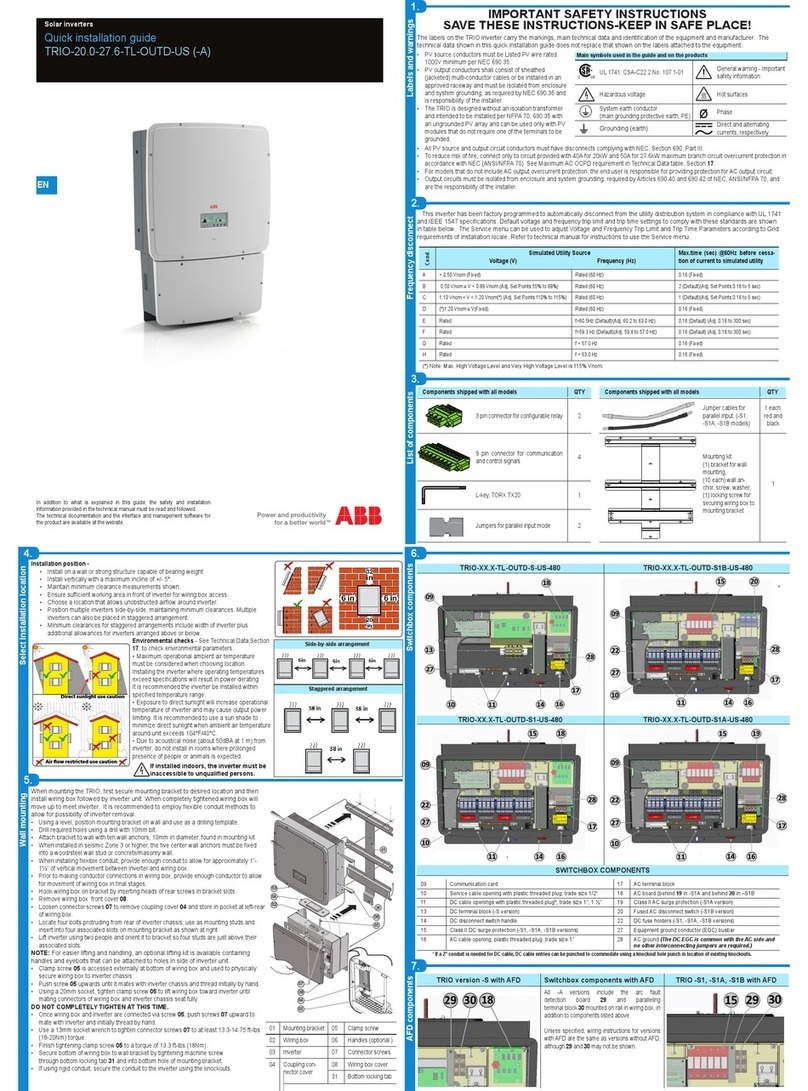
ABB
ABB TRIO-20.0-TL-OUTD-US Quick installation guide

Sinergex
Sinergex PureWatts Elite 150 user manual
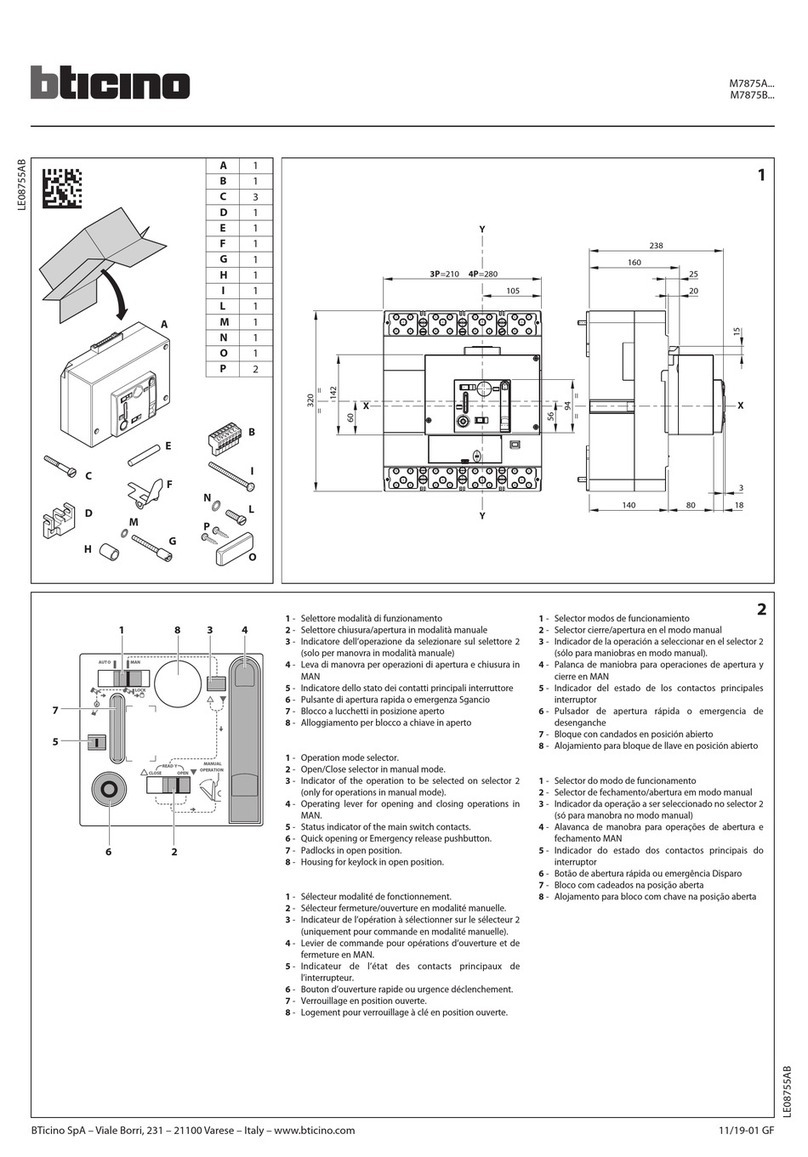
Bticino
Bticino M7875A Series manual
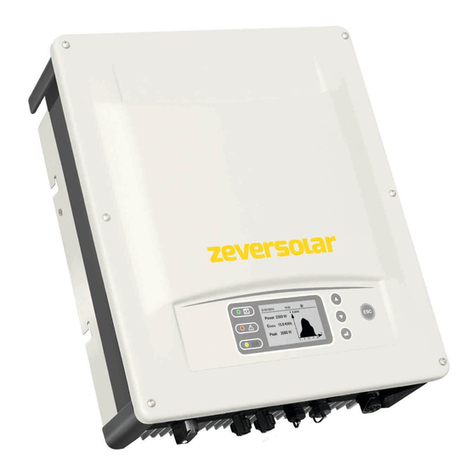
Zeversolar
Zeversolar Evershine TLC4000 Installation and operating instructions
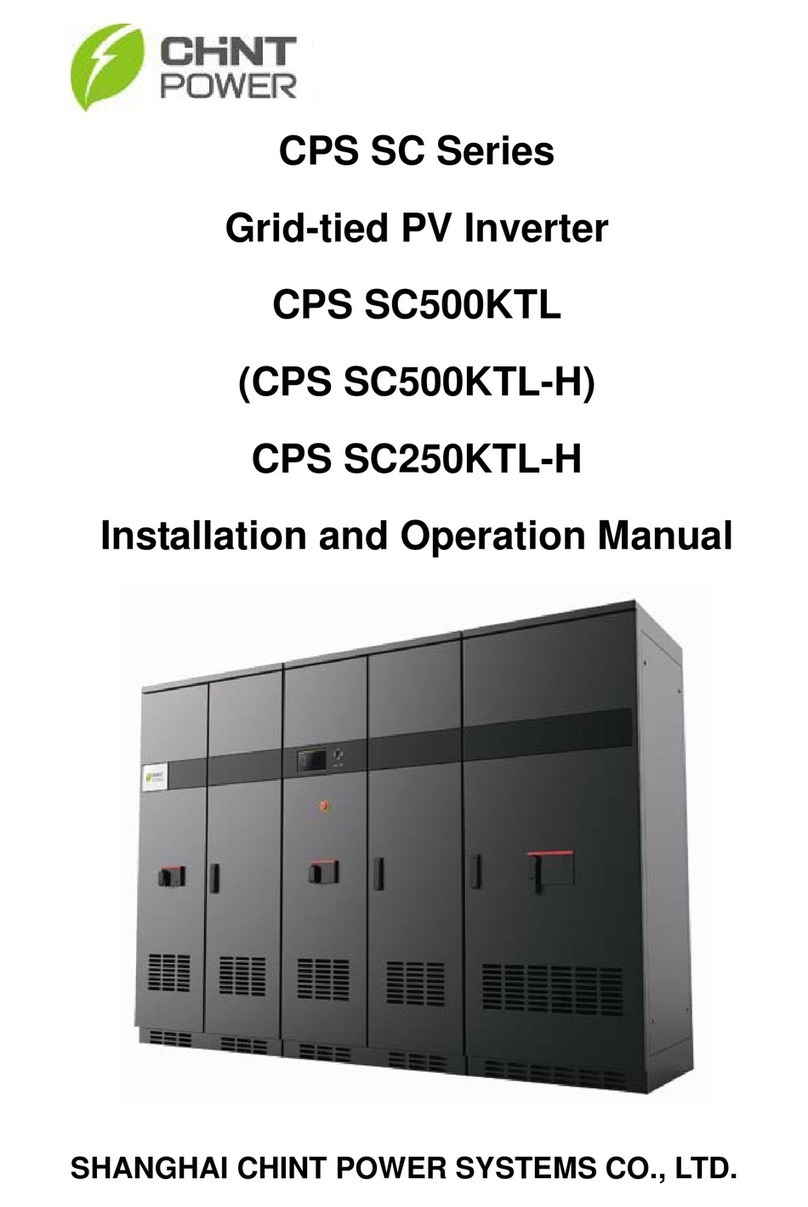
CHNT Power
CHNT Power CPS SC500KTL Installation and operation manual
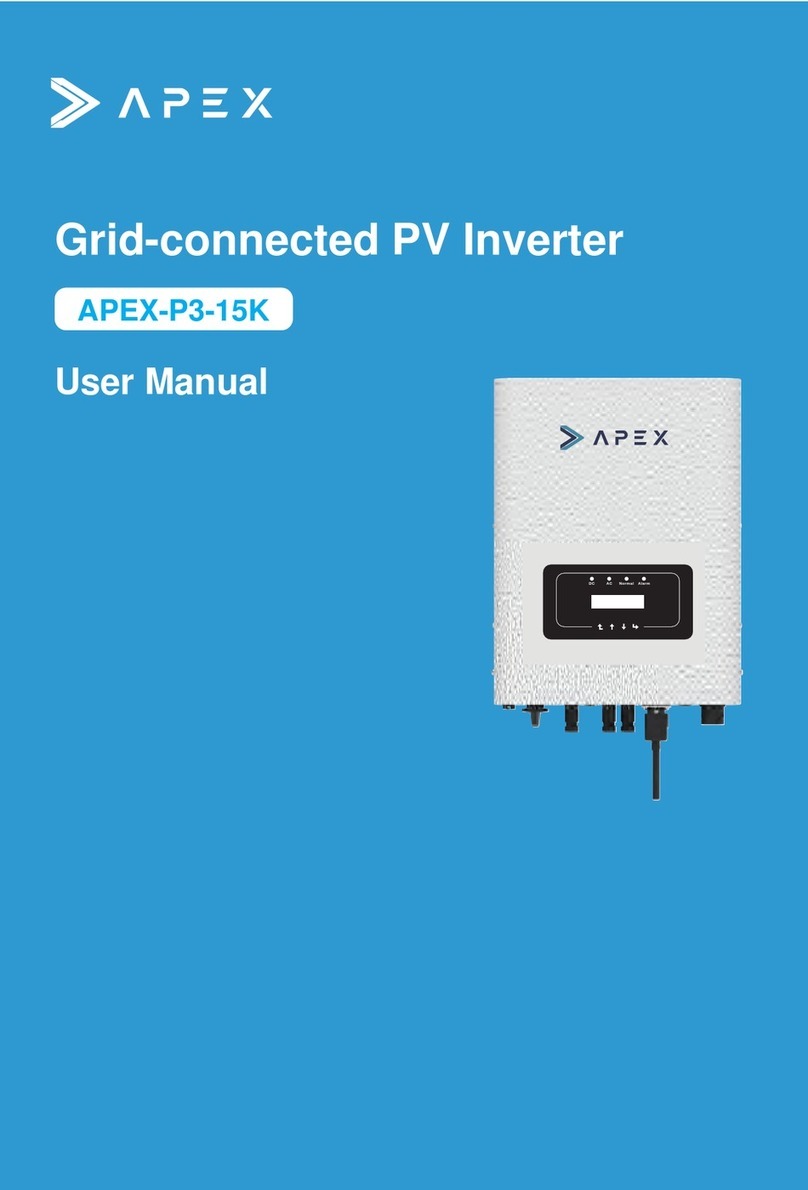
Apex Digital
Apex Digital APEX-P3-15K user manual

Toshiba
Toshiba TOSVERT VF-S15 series Quick start manual
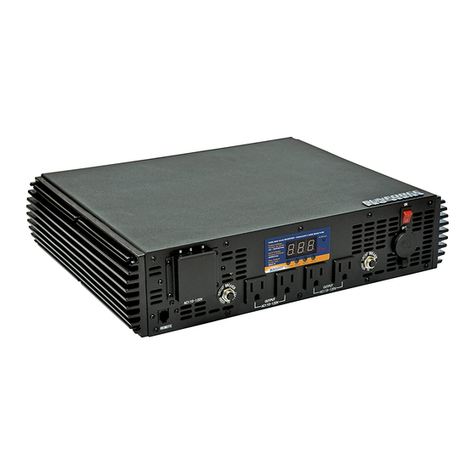
Sunforce
Sunforce Pro Series 11260 user manual

B-K lighting
B-K lighting SQUARE ADJUSTABLE WELL STAR installation instructions
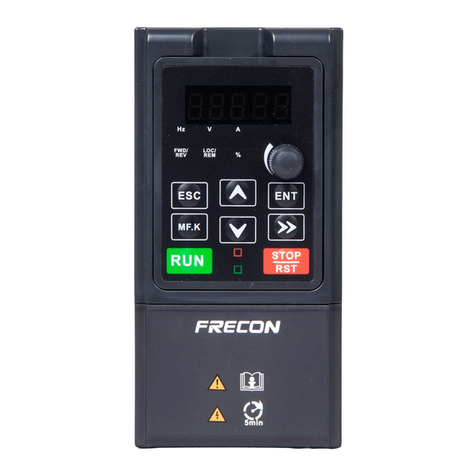
Frecon
Frecon FR150A Series manual
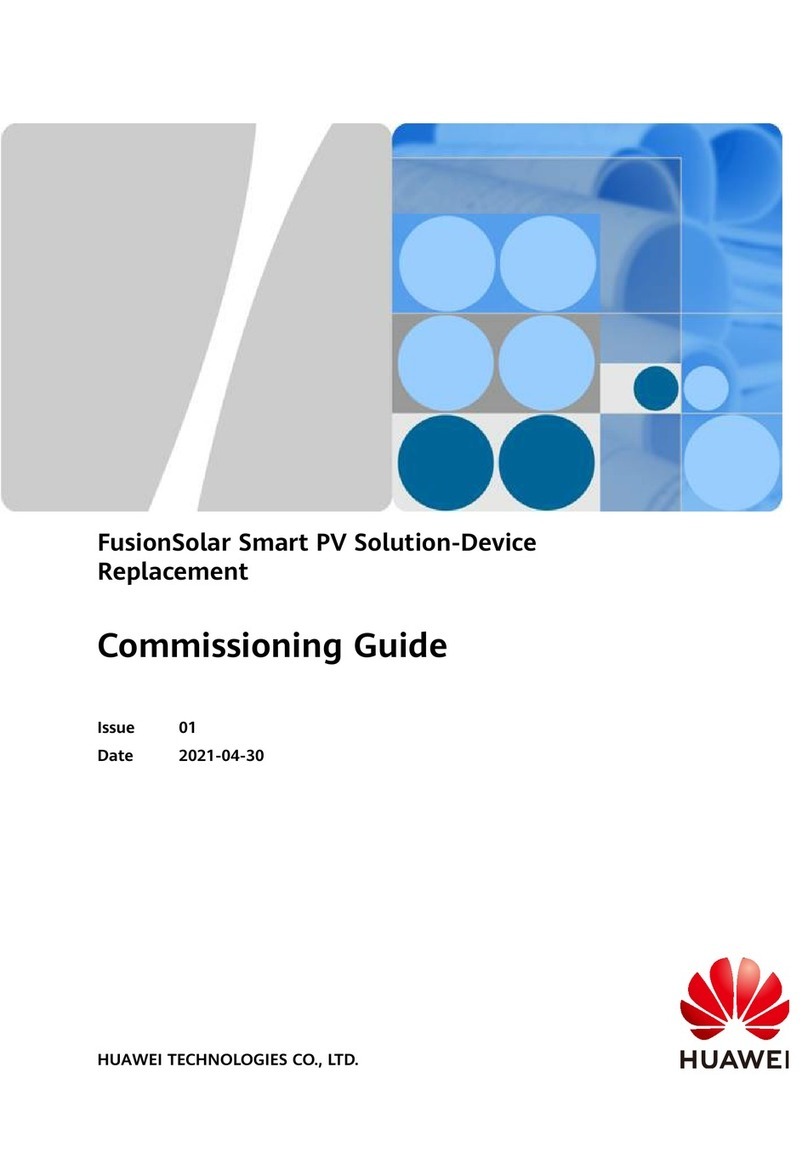
Huawei
Huawei FusionSolar SUN2000 Commissioning Guide
